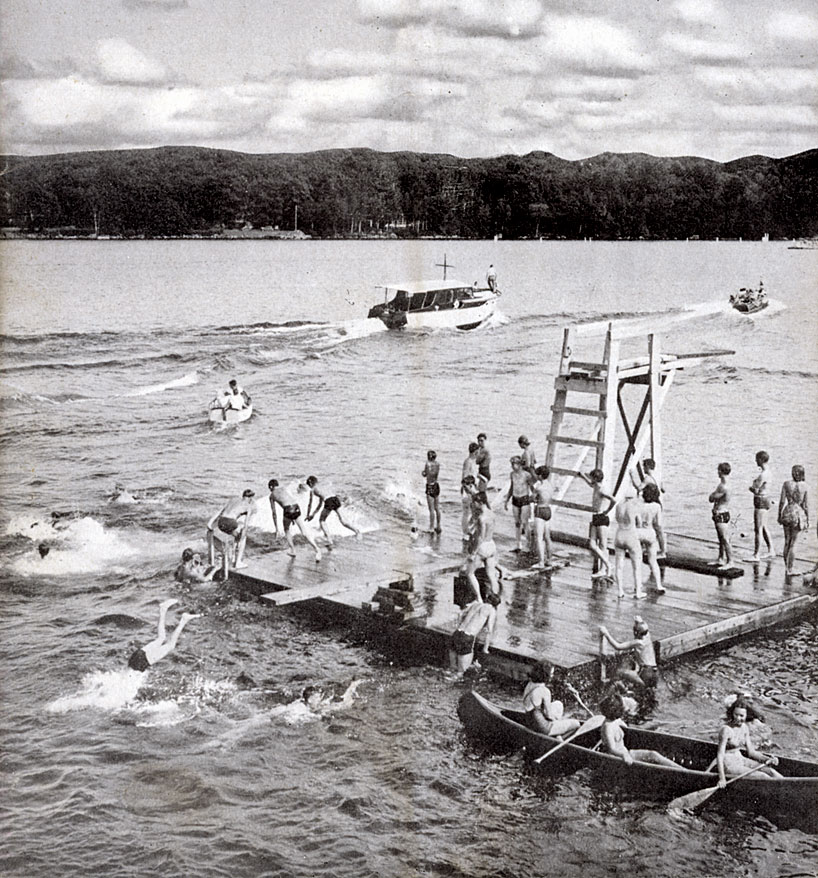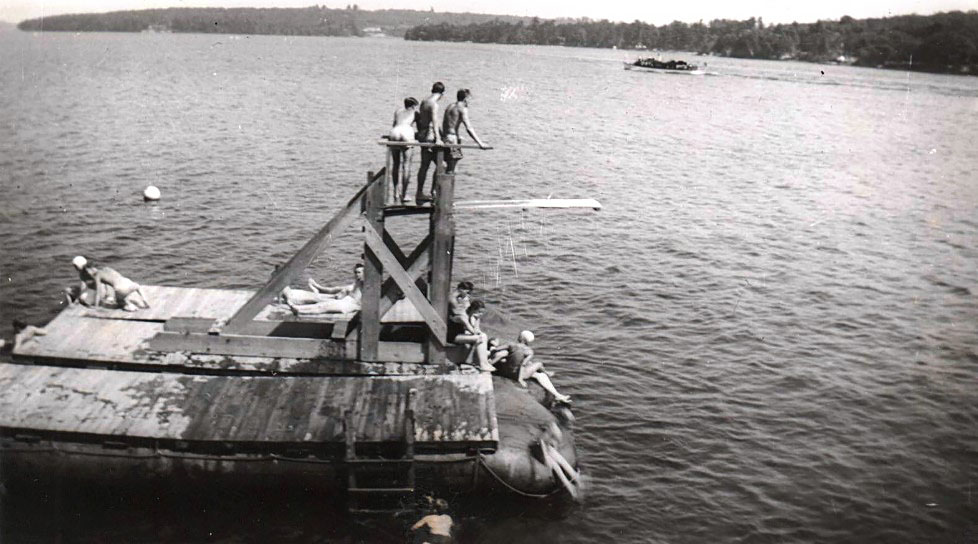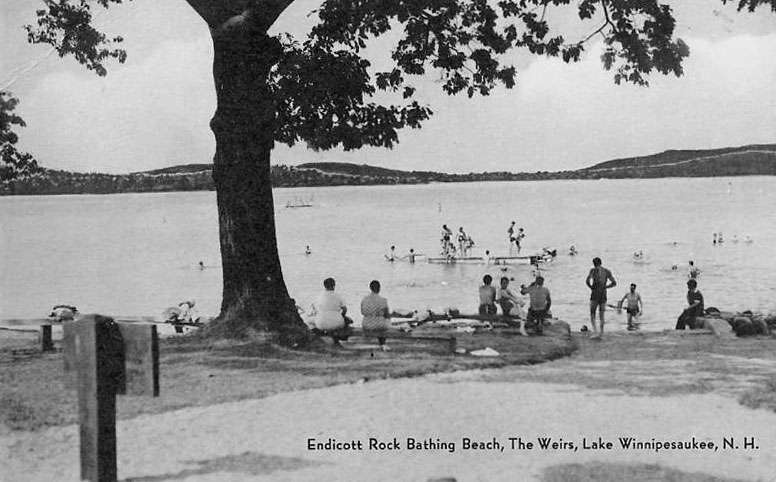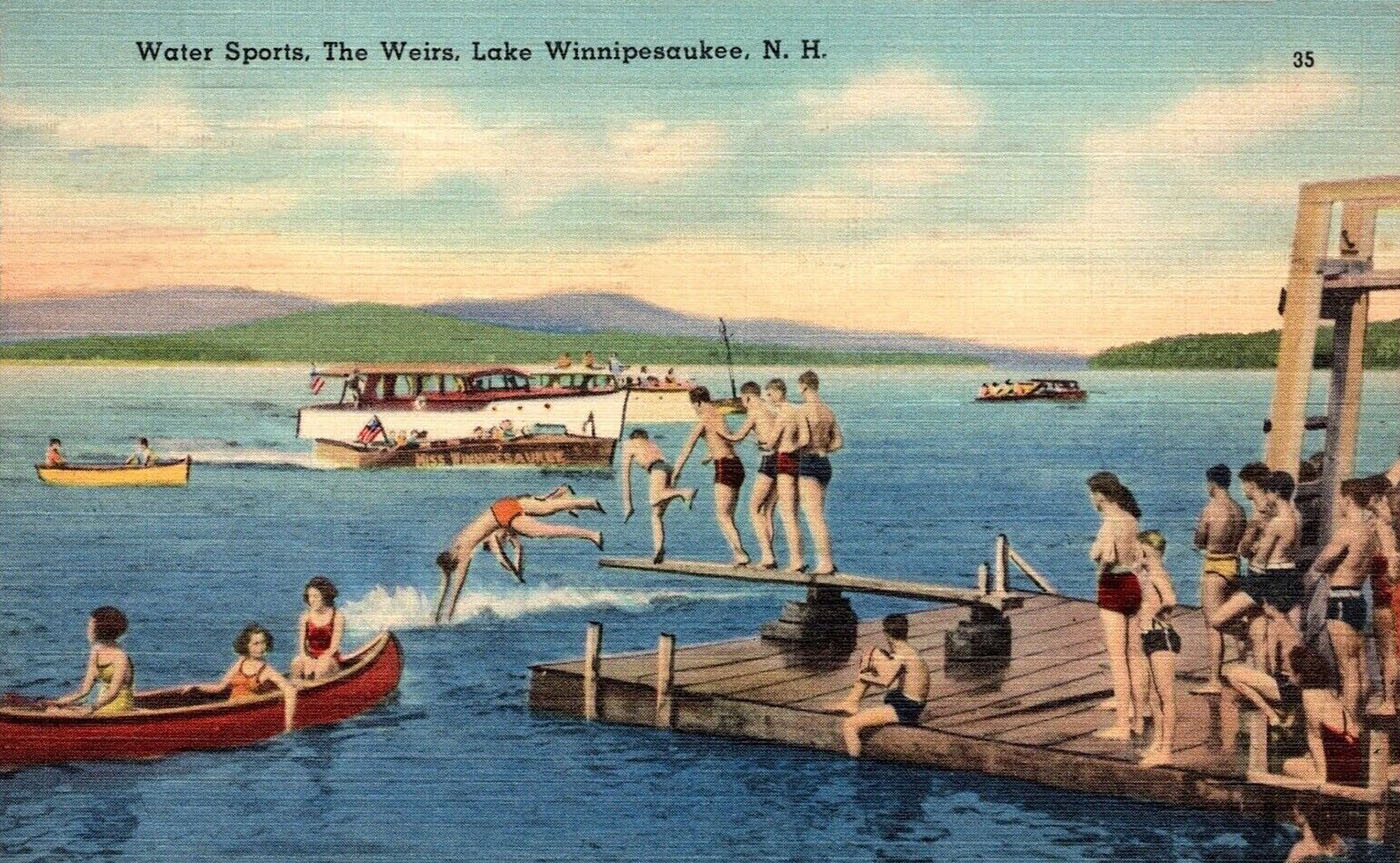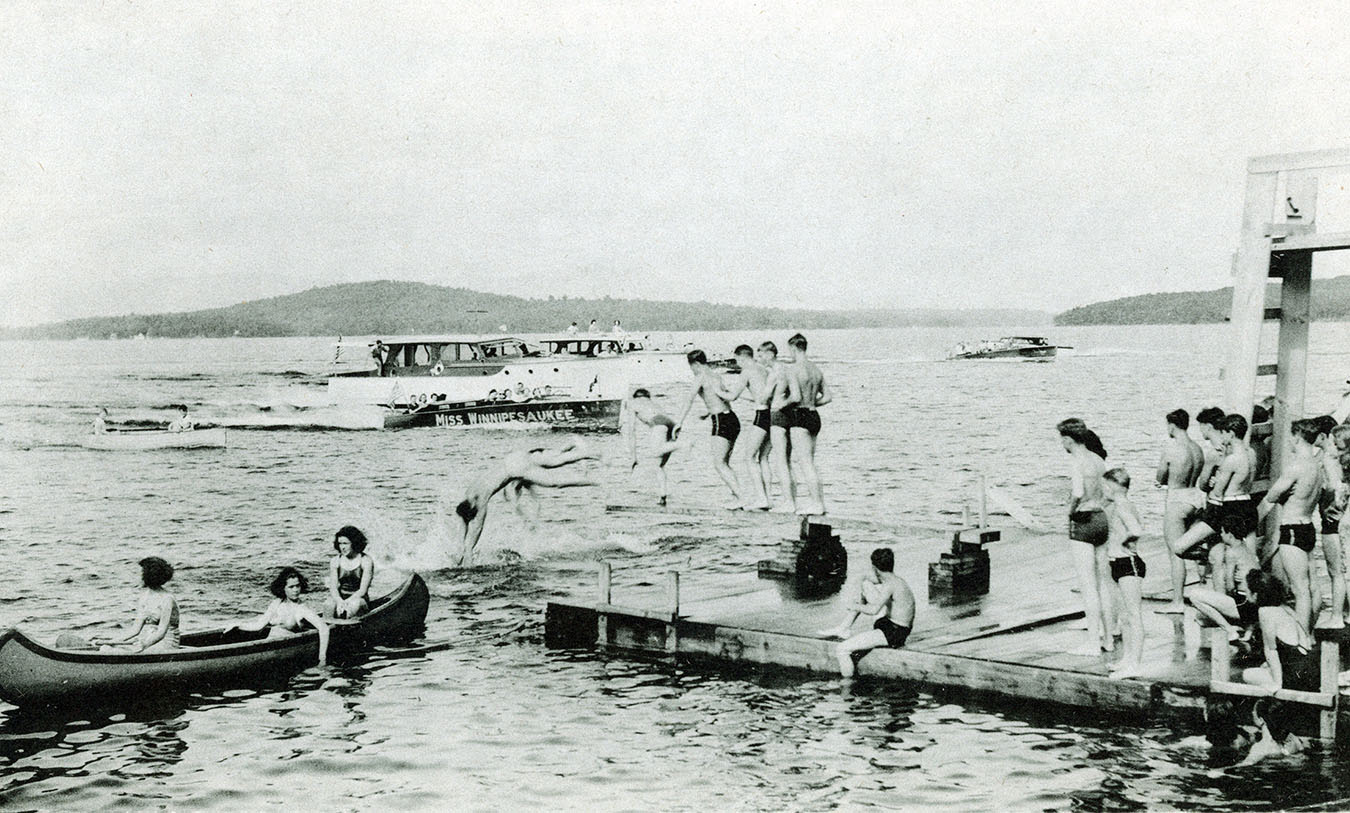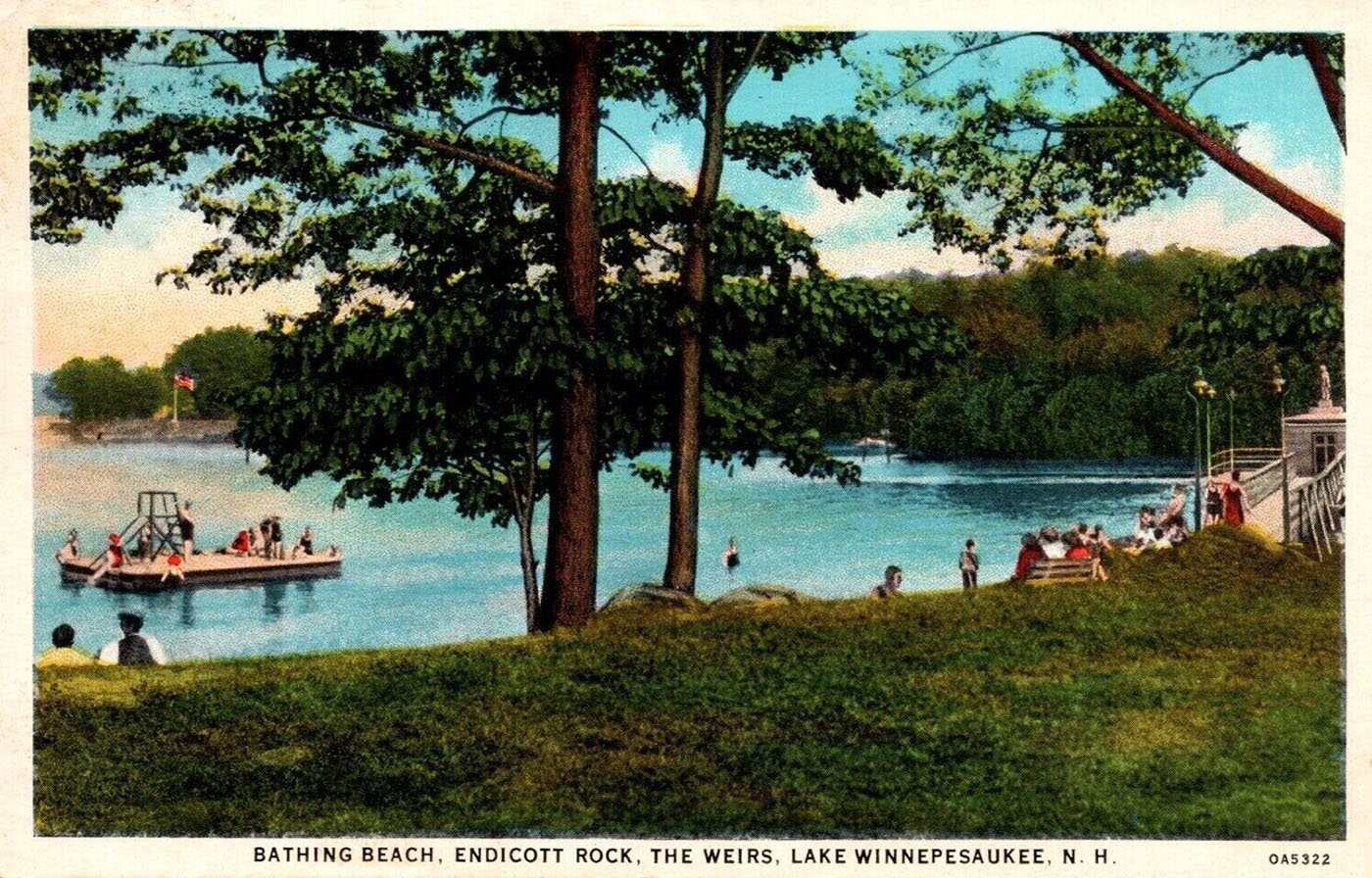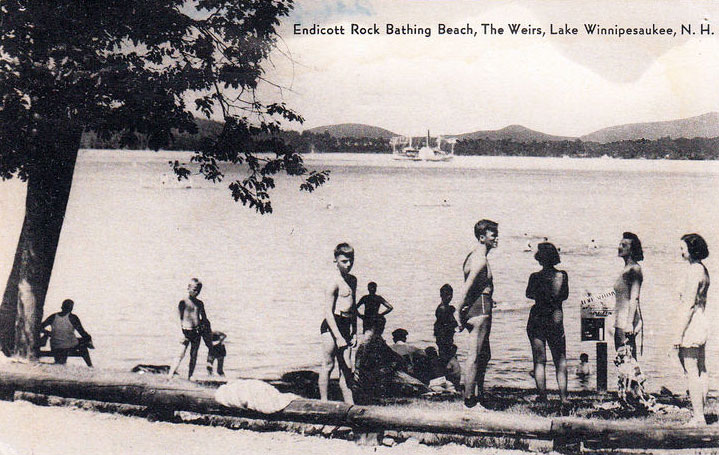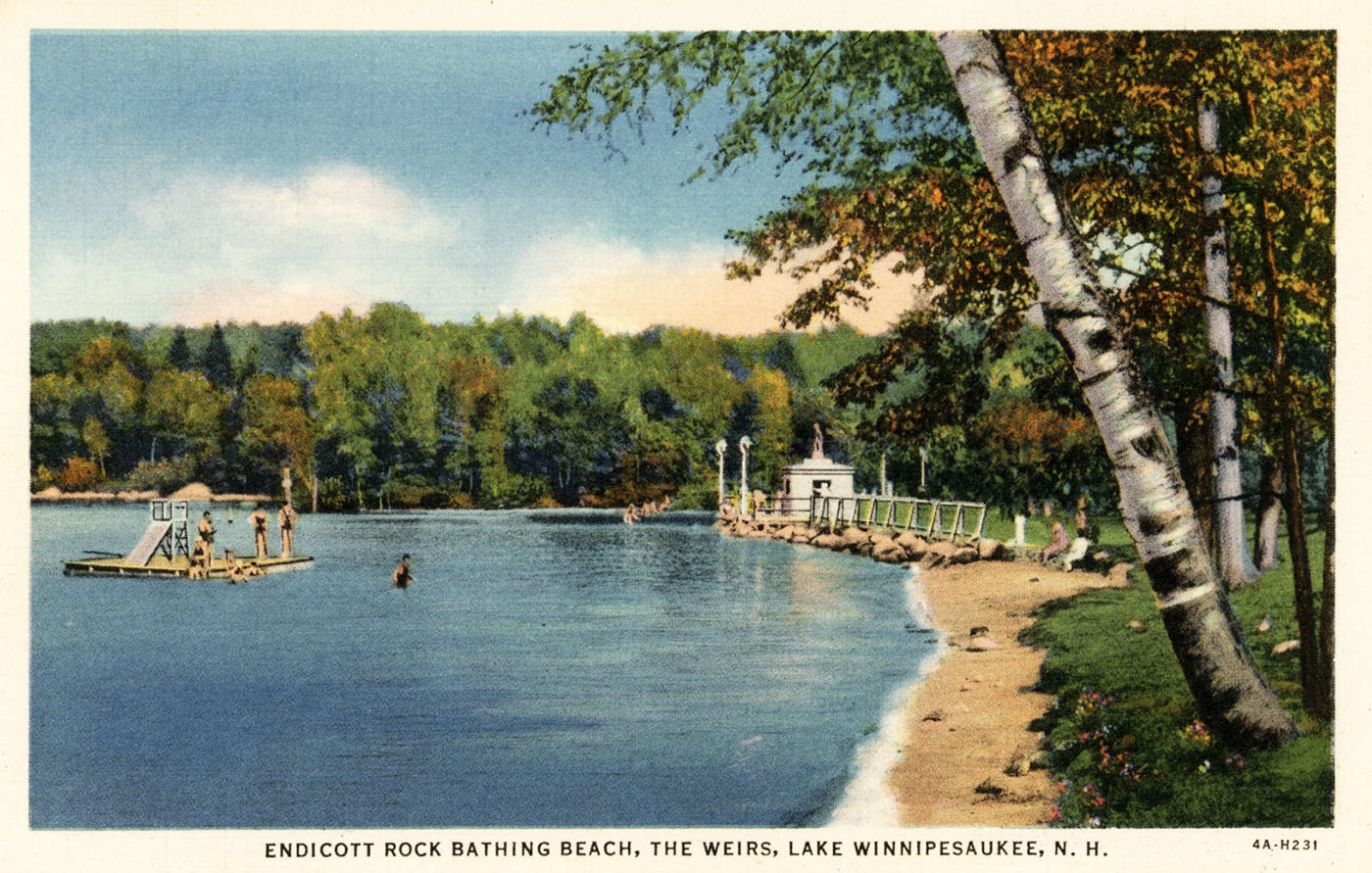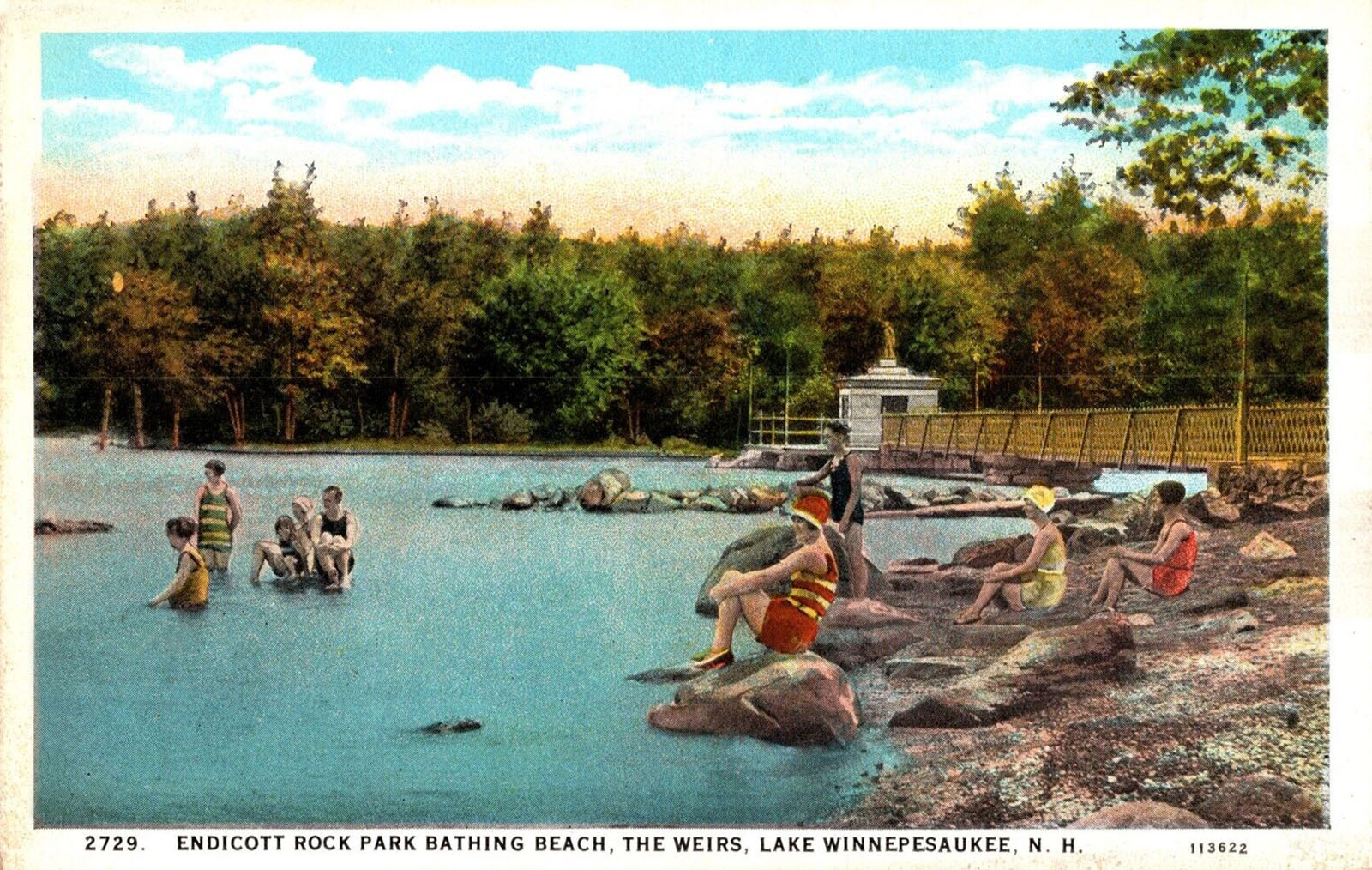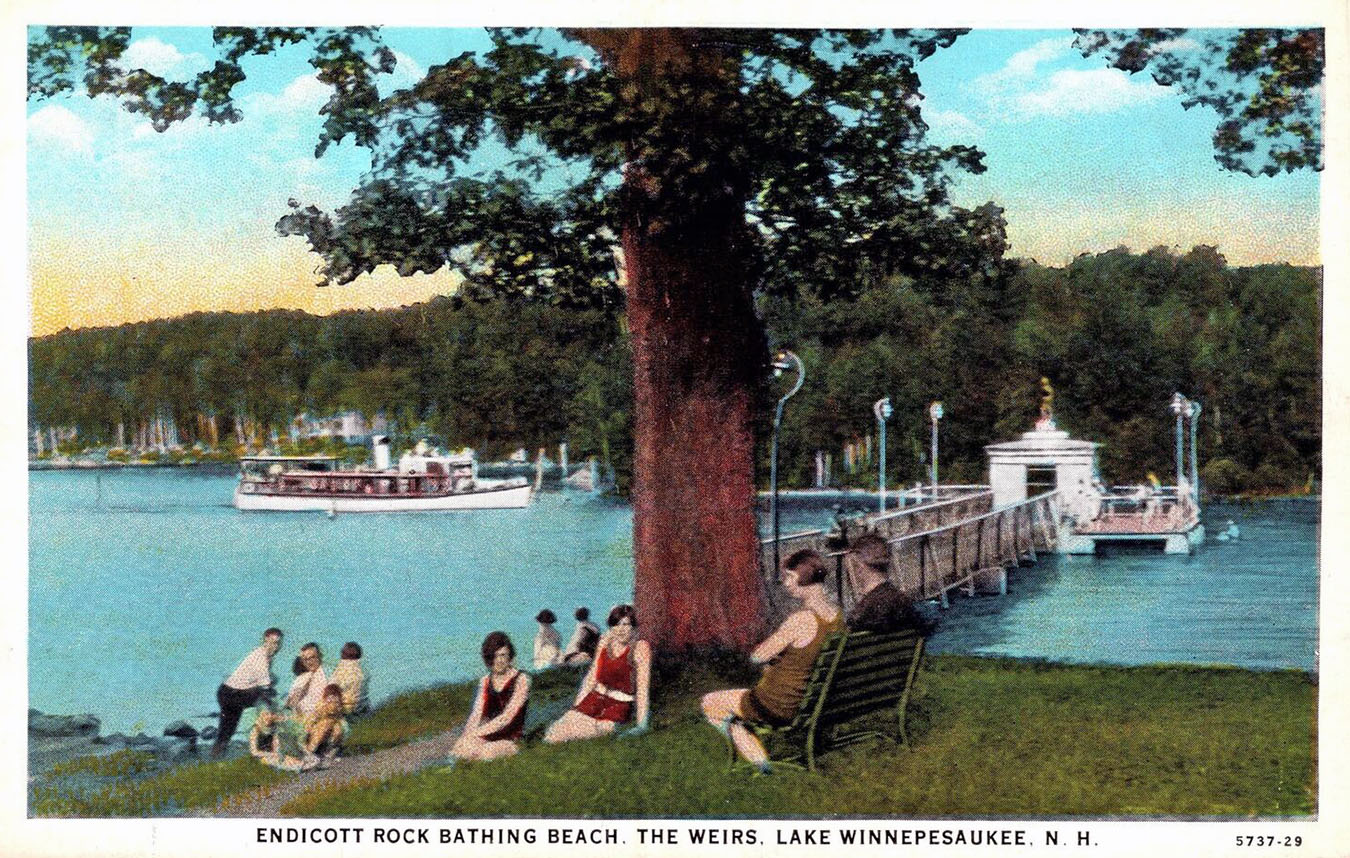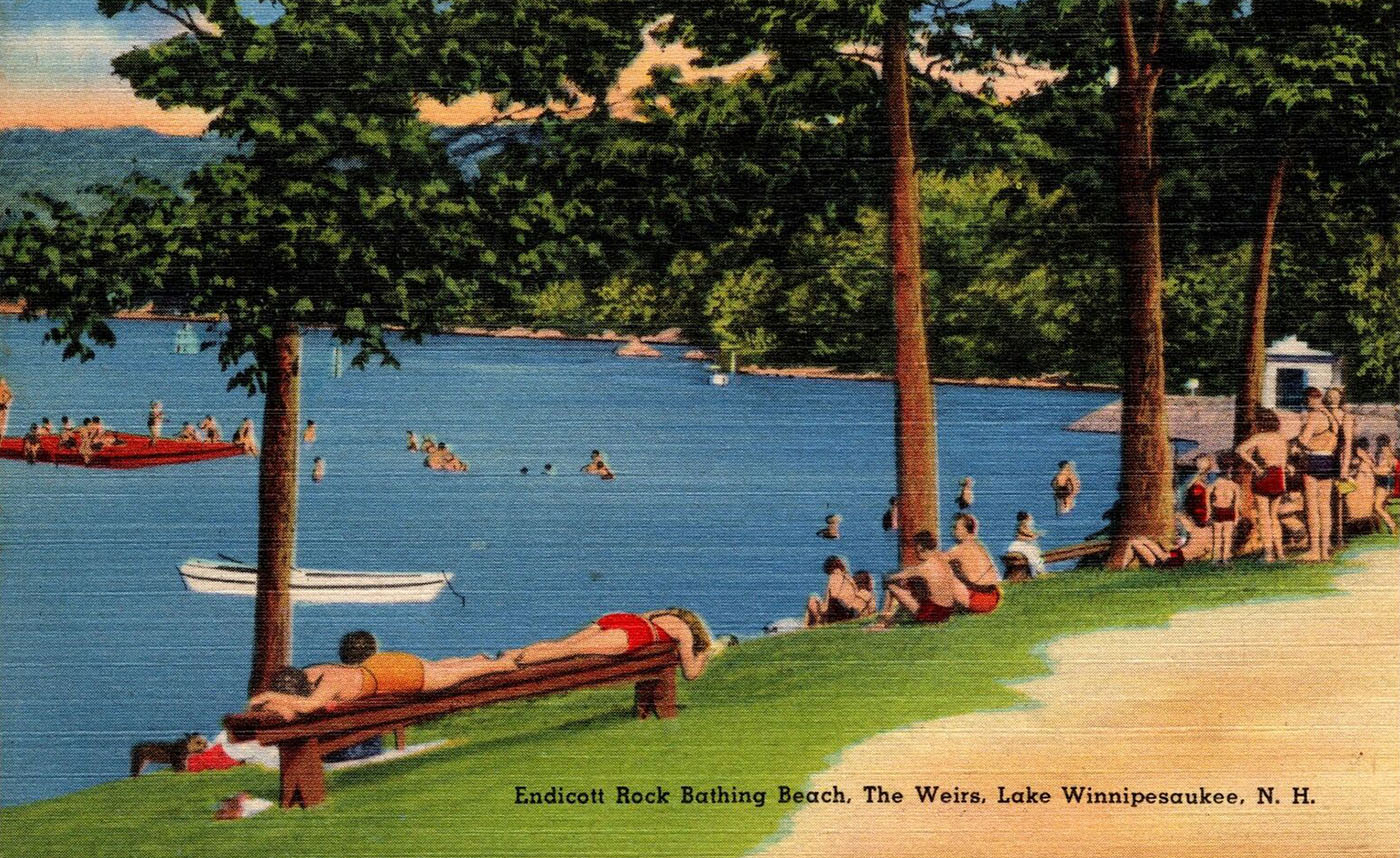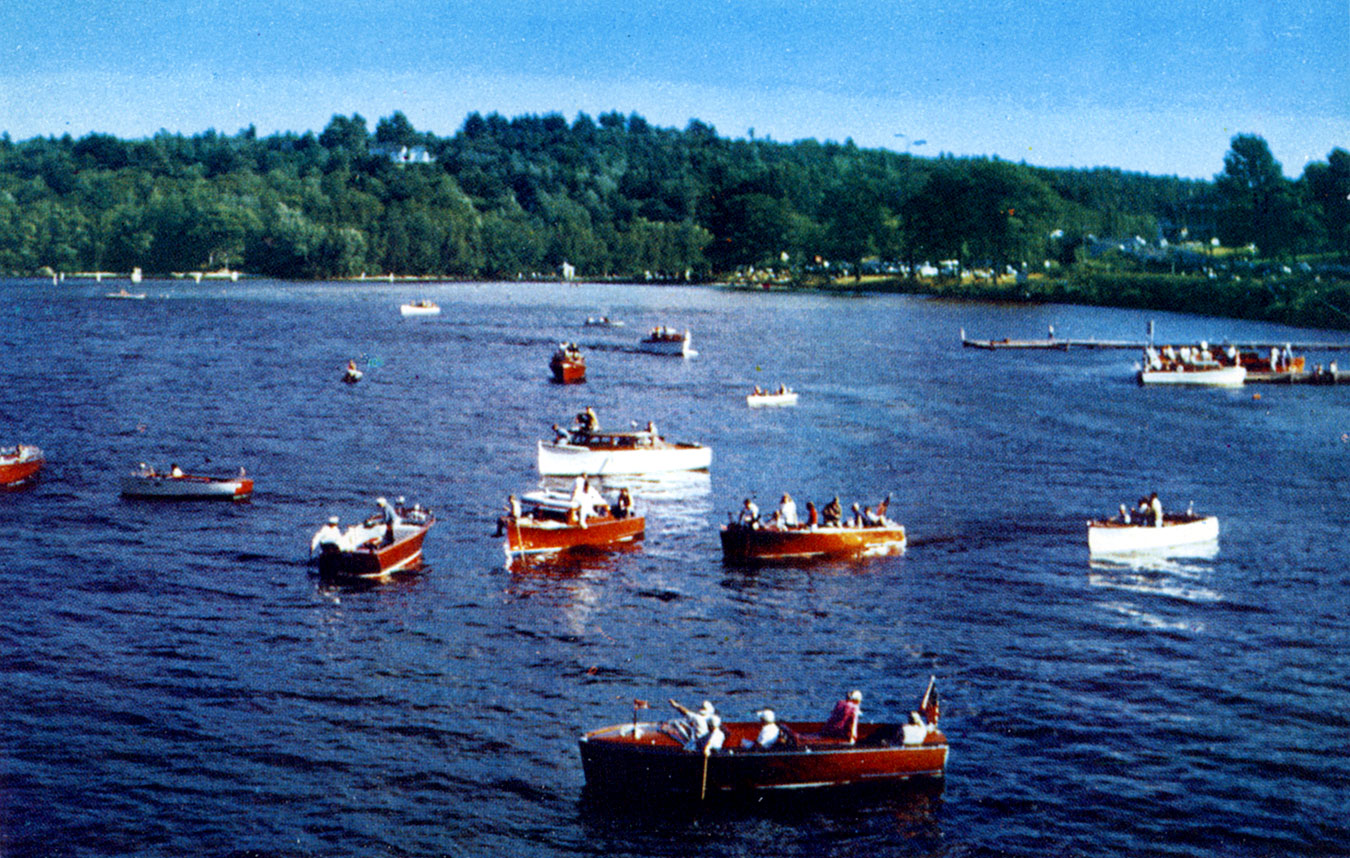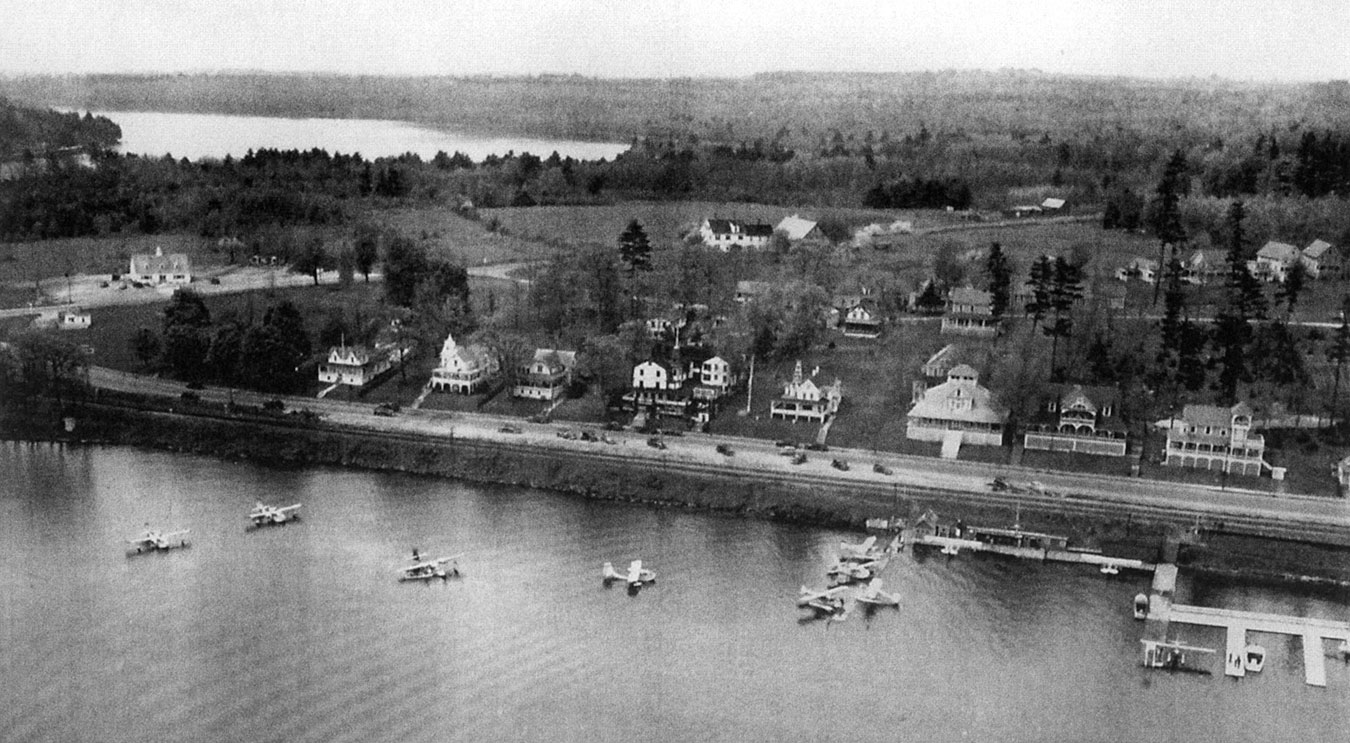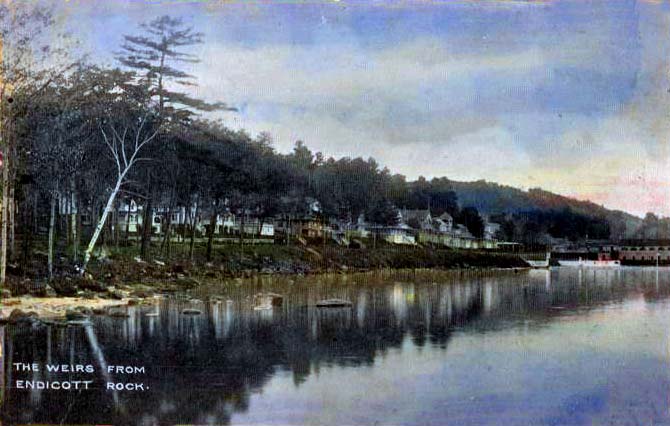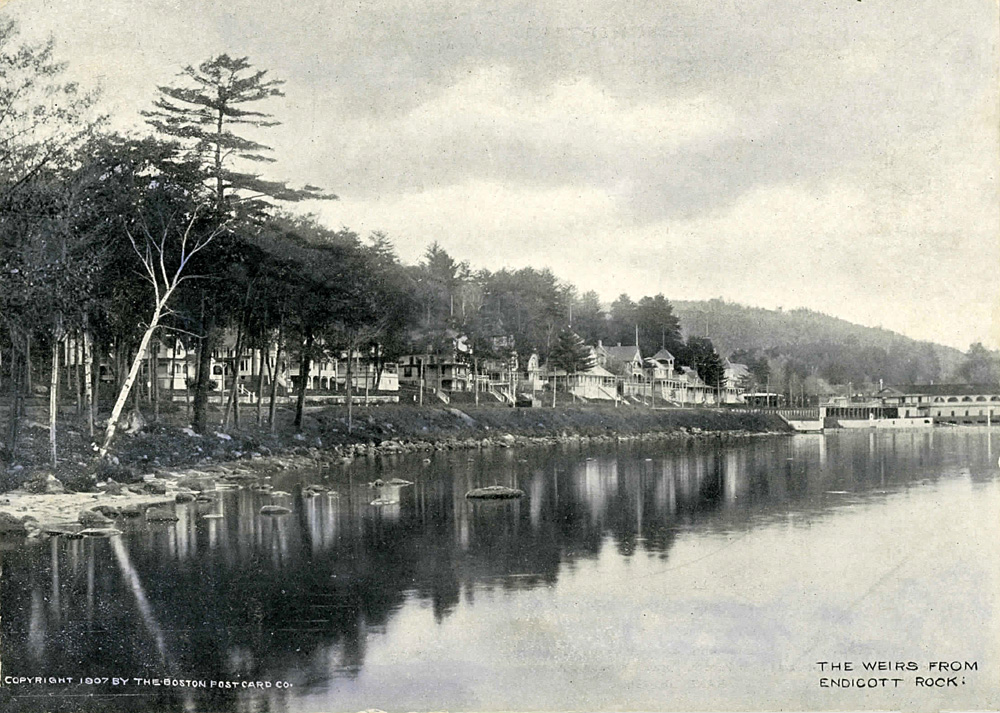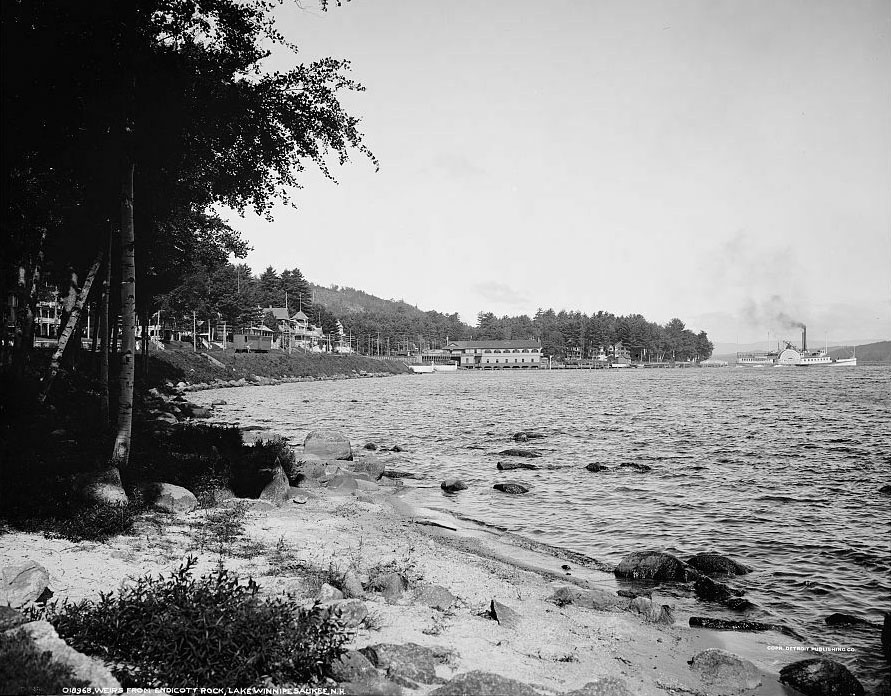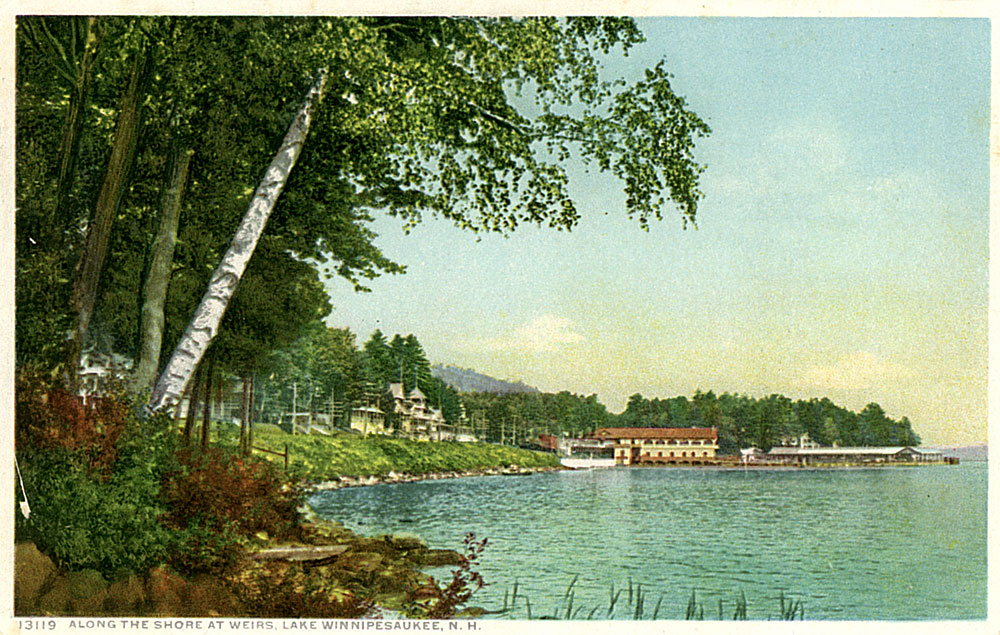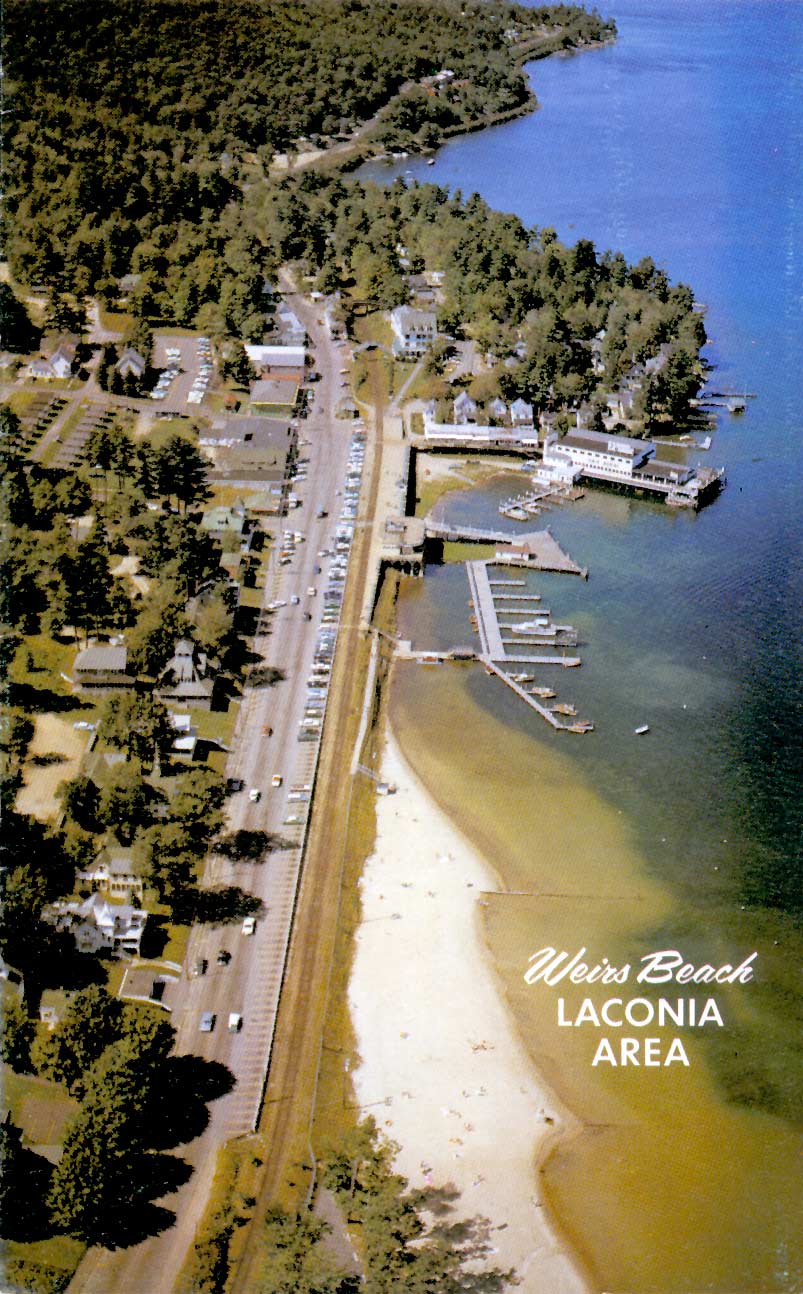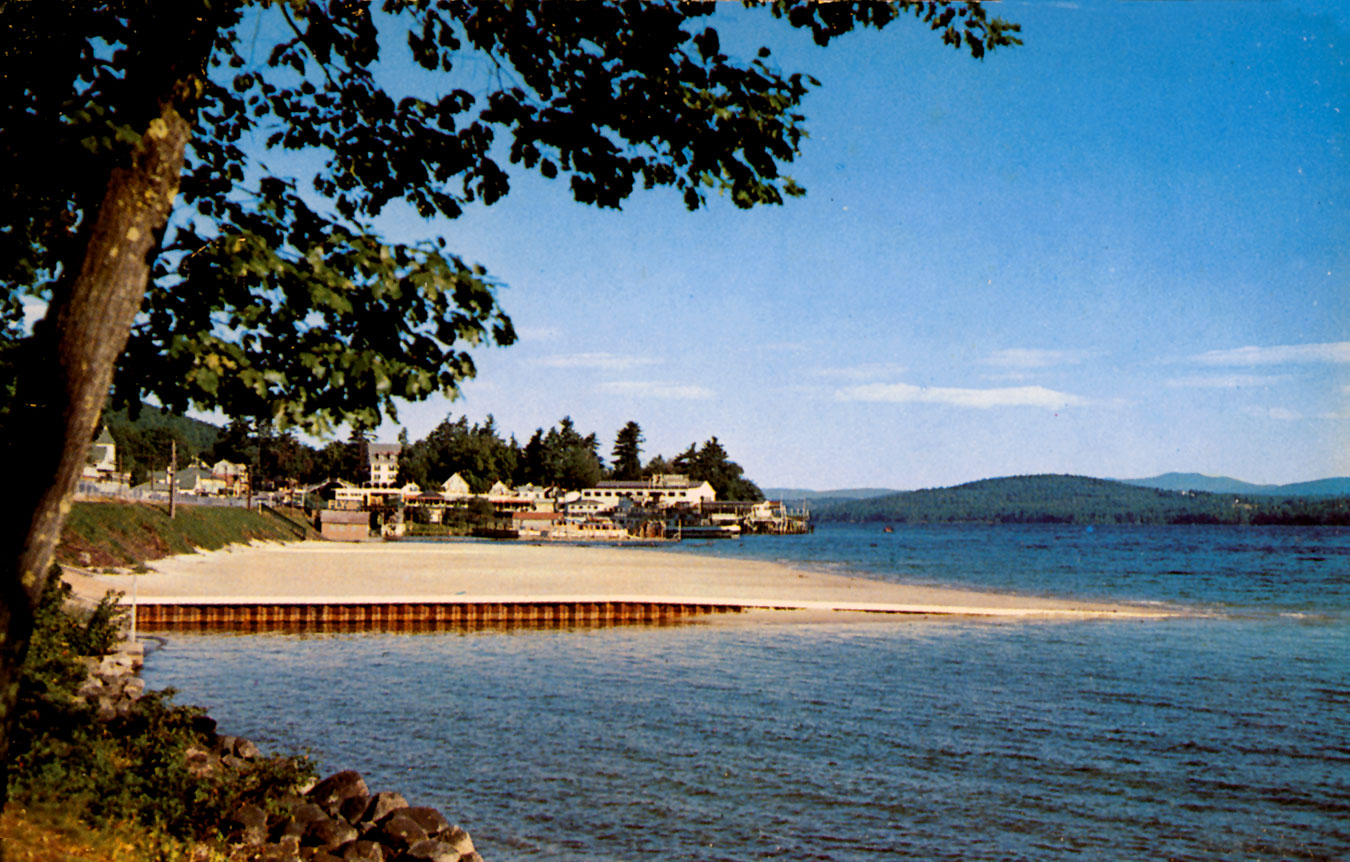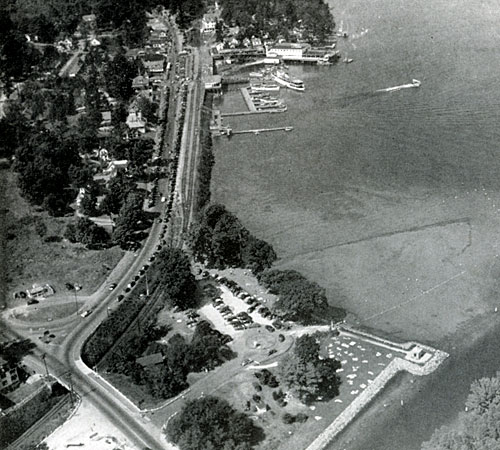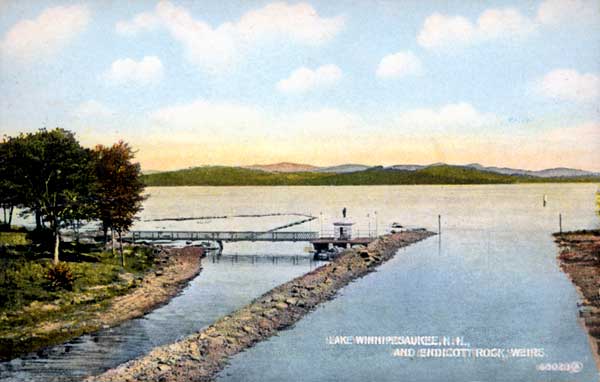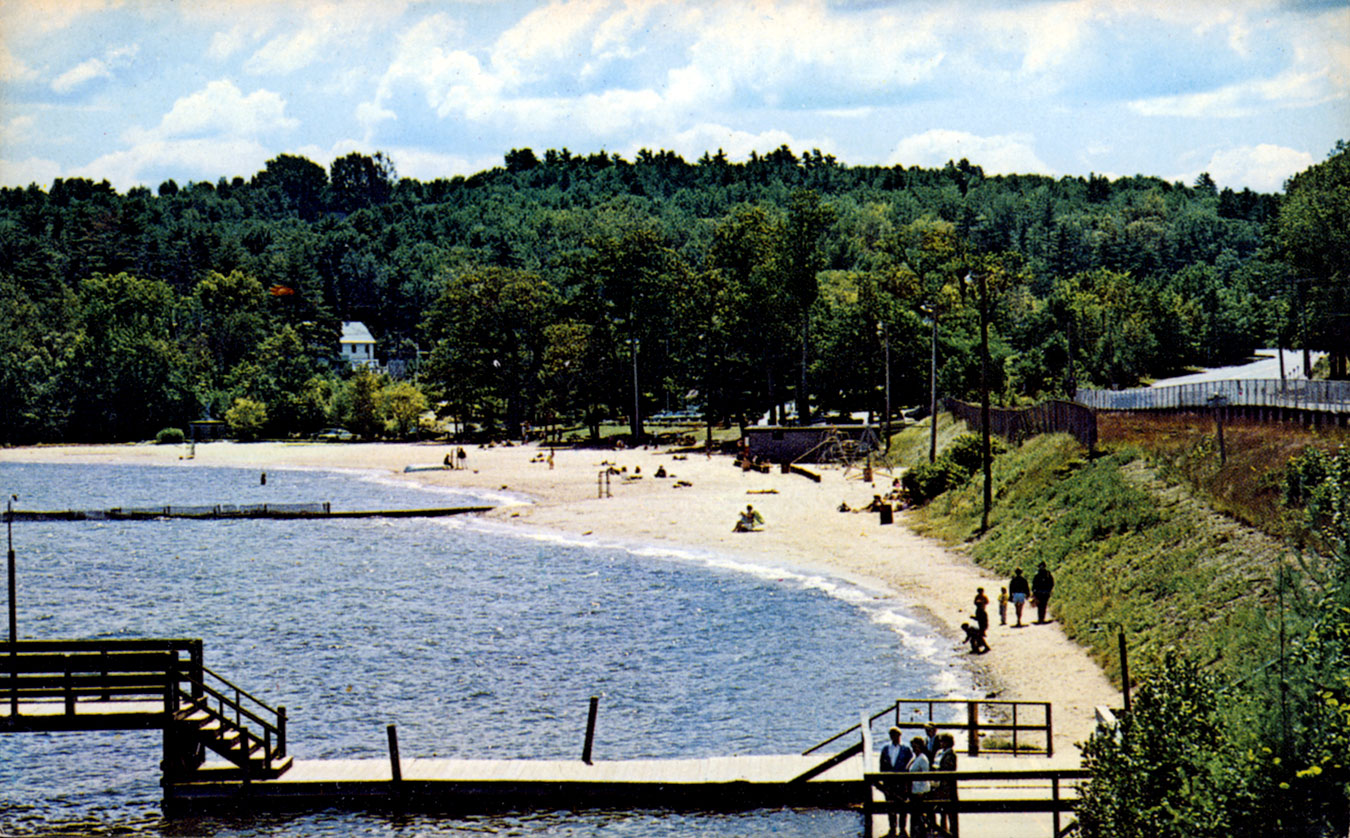Beach History
Prior to the 1950’s, Weirs Beach was known simply as “Weirs”, or more commonly, “the Weirs”, and in the popular language, this colloquialism continues to this day. The addition of the word “Beach” to the locale’s name was the marketing idea of a few savvy local businesspeople, especially Ed Hoagland, owner of the Lakeview House at the time. (It is still rare to find a town on the map anywhere in the USA today with the word beach attached to its name that is located on a lake, and not on the ocean!)
On November 17, 1955, by unanimous vote, the Laconia city council made the name change from “Weirs” to “Weirs Beach” official. Going along with the change was the B&M railroad. On April 12, 1956, the railroad ordered its local ticket agency to change the name of the Weirs train station to Weirs Beach station (the sign was actually changed on April 29.)
But the word “Beach” could not be added until there actually was a beach. Prior to the 1950’s, there was no beach at Weirs Beach. Bathers swam off the rocky shores of Endicott Park to a diving raft.
The Diving Rafts
The following photos are of the public raft.
THE MINI BATHING BEACH
Back then, people didn’t go swimming – they went “bathing”.
Mermaids at the Beach at the Weirs. From a 1923-1925 Winnipesaukee Pier brochure.”…there is an added attraction, one that never fails to please, which consists of the bewitching assortment of girls, fair faced and fair of limb, who bathe their ravishing beauty in the sparkling waters of Lake Winnipesaukee during the summer.”
WHEN THERE WAS NO BEACH
In the photo below, one of the three sets of railroad tracks which had been part of Lakeside Avenue since the mid 1880’s had been removed as far as the Cavalary HQ building and was in the process of being removed entirely.
It was during the 1949-1951 administration of Laconia Mayor Thomas J. McIntyre that the beach was created. Starting in 1950, and continuing for several years, truckload after truckload of sand – some dredged from the Lake (the Army Corps of Engineers was dredging the Weirs Channel to deepen it at the time), and some from the nearby town of Gilford – was brought in to build the beach. Click here for a 1950 photo of the Weirs Channel dredge.
At the same time, three long breakwater jetties were built to retain the sand. Two jetties divided the central part of the beach, and the third jetty along the Weirs Channel kept the sand from washing away down the channel.
(When McIntyre began his term as Laconia mayor on March 22, 1949, he was only 34 years old, the second-youngest mayor in Laconia history to that point. A Democrat, he was later elected Senator, and served NH from November 7, 1962 – January 3, 1979.)
The Jetties
Above is an early 1950’s photo showing the second jetty in profile. (The Weirs Seaplane Base is viewed in the distance – note the roof of the building that is marked “FLY”.) At this time, the beach had only been built about halfway towards the Weirs Channel. An aerial photo from 1952 shows that the beach was also being built from the opposite direction (from the Channel northward), leaving a gap in the middle, which is what we see in the foreground above. The reason for the gap was that the northern, municipal section of the beach was owned by the City of Laconia while the southern, Endicott Rock Park section was owned by the state of NH. (In 1952 the city purchased Endicott Rock Park from the state.) According to a December 20, 1952 Citizen article, “Captain Edward Lavallee is piping sand from the channel to fill the short stretch of land between the two. Captain Lavallee constructed the municipal beach in 1950 with his suction dredge equipment. Captain Lavalle will move 1800 cubic yards of sand from the channel for $1 a yard.”
The dredge barge was 45′ x 75′ in size when Lavallee purchased it in 1949 from the John Goodhue boatyard in Quincy, MA. Disassembled and moved in sections, the barge arrived in Lakeport on December 9, 1949. After reassembly, the barge was launched into Paugus Bay on February 17, 1950. It barely fit through the Weirs Channel bridge, when it was moved later that spring to Weirs Bay to begin building the beach.
Captain Lavalle was the long-time skipper and owner of the Uncle Sam mailboat. He died on January 24, 1984, at the age of 92.
BEFORE AND AFTER PHOTOS
Compare the two aerial photos below to see Weirs Beach before and after the addition of the beach. The color aerial from 1960 shows the brand new, big, beautiful beach. The black and white aerial photo appeared in an ad sponsored by the Weirs Chamber of Commerce in a 1949 promotional brochure.
THE BREAKWATER
EROSION TAKES ITS TOLL
Only 8 years after its initial construction, erosion had already taken its toll. A May 1958 Laconia Citizen article noted that work was about to start on a project to reclaim “about 2,000 cubic yards of sand which have washed away from Endicott Beach at The Weirs.” During the 1960s, the beach was continually replenished with new sand every year or two. The last replenishment occured in 1969. Since 1970, no new sand has been added to the beach.
As is clear in the photo below, in the 1960s, the beach originally extended via a narrow strip all the way to the public docks. Mother nature and the forces of erosion have taken their toll over the intervening 40+ years; today, the beach does not even extend as far north as the second set of stairs that used to lead to the beach from the public boardwalk.
Eventually, all the sand at the north end of the beach migrated south, towards the channel. The result is the wide, beautiful crescent beach of today. The southern end of the beach, where most of the sand has piled up against the long breakwater jetty along the Weirs Channel, is nicer than ever. But the northern end of the beach is now completely gone. Compare the “Then” and “Now” photos below. (The “Now” photo is out-of-date. The beach has eroded even further than this 1998 photo.)
In May, 2011, the latest effort to restore the beach to its previous extents (there were two earlier efforts) began with the hiring of the Woods Hole Group of Plymouth, MA to study the erosion problem. This latest restoration effort has continued to this very day.










